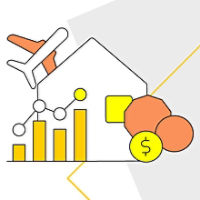“Bargain hunters taking advantage of Black Friday sales drove an increase in spending in November, broadly in line with 2023, and we expect to see a drop off in spending in December as we have seen in previous years,” CBA Chief Economist Stephen Halmarick said.
“We’re seeing Black Friday and holiday spending shift earlier as retailers entice shoppers with early discounts on discretionary items. Collectively, sales for October and November 2024 were up 2 per cent compared to the same period last year.”
The disparity in spending across home ownership status remains, with spending by renters up just 0.4 per cent for the year to November compared to mortgage holders (+1.6 per cent) and those who own their home outright (+2.7 per cent).
The annual HSI growth rate decreased to 2.7 per cent in November, down from 4.2 per cent in October. The biggest annual spending increases in the year to date have been in Hospitality (+7.6 per cent) and essential services such as Education (+5.2 per cent) and Health (+5.0 per cent).
Mr Halmarick said the strong November results largely reflect seasonal trends, with a pull-forward of spending from December into earlier months.
“Our view remains that a substantial increase in household spending is unlikely to occur until the RBA starts lowering interest rates. Our base case is a start to rate cuts in February 2025, but with a clear risk that this is delayed until later this year.”
The CommBank HSI Index tracks month-on-month data at a macro level and is based on de-identified payments data from approximately 7 million CBA customers, comprising roughly 30 per cent of all Australian consumer transactions.


